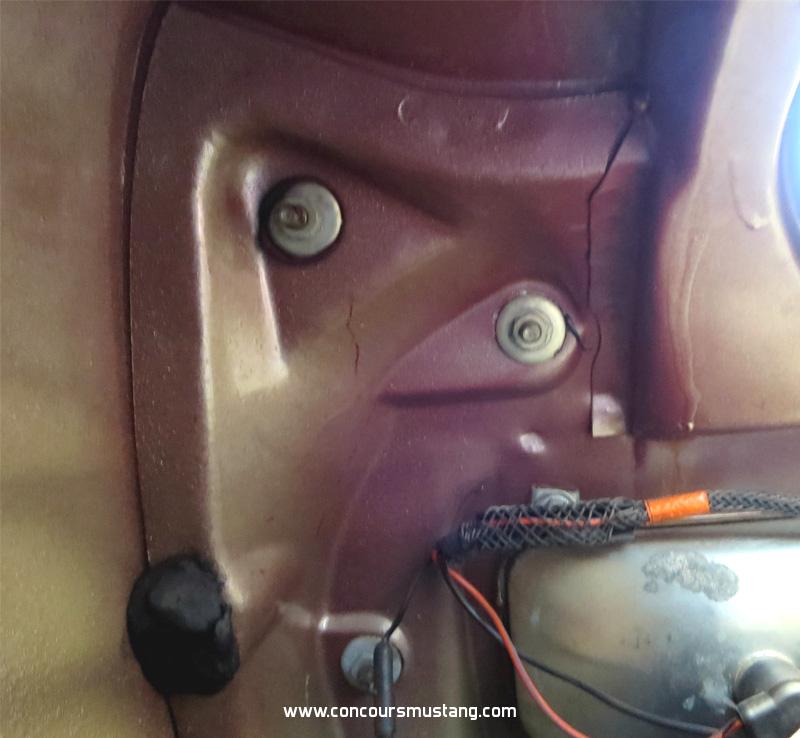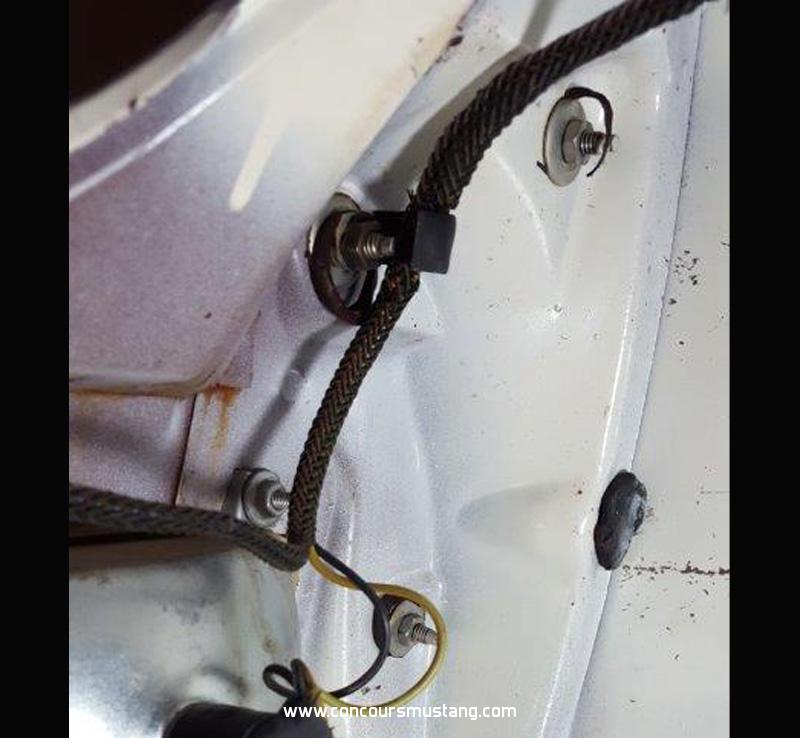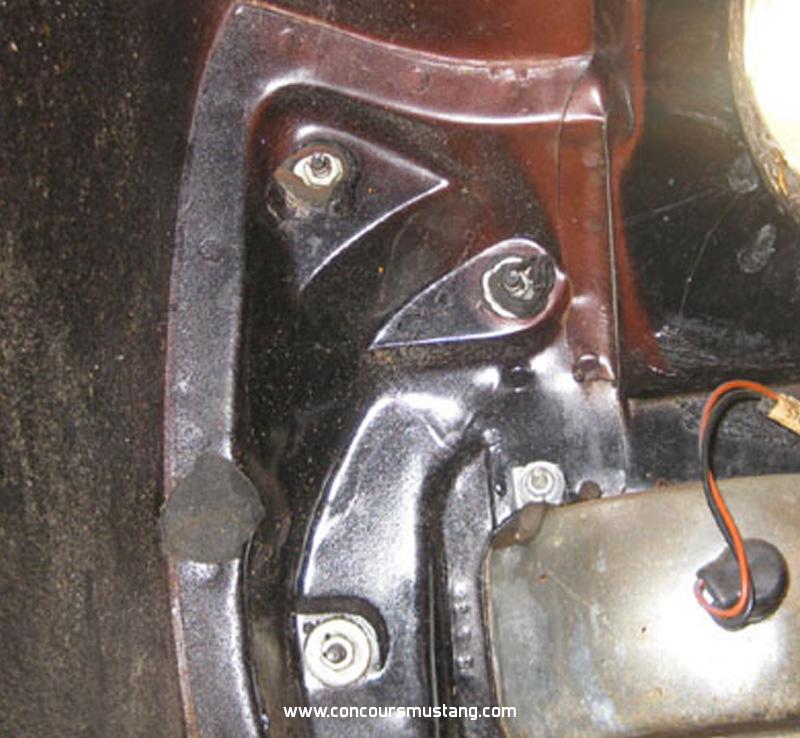We've covered 1966 San Jose quarter panel extension/end cap retaining nuts in another thread but the question came up elsewhere the other day about 65 San Jose cars and I figured it should be shared here also to benefit the members and lurkers
As a reminder the 66 San Jose thread/discussion
http://www.concoursmustang.com/forum/index.php?topic=16965.msg106268#msg106268++++++++++++++++++++++++++++++++++++++++++++++++++++
NOTE: For others reading this make sure your match matches the same specific details (when and where the car was built) before you consider applying what follows. Details are different even at the same plant in other production years or even periods such as weeks or months in some cases
As mentioned the end caps were installed prior to the exterior color being applied to the trunk and exterior. Painters did not always take the time to turn the spray gun backwards and get paint in all the unseen corners of the trunk ? as evident by pictures of unrestored cars. The end caps away from the body approx. 1/2" allowing the paint to wrap around the end cap and the end of the panels it attached to. At this time, we don?t know how they were held in place during the first production year as on some show body color consistent with spray patterns up to and around the mounting holes. There are other examples where there is evidence of body color on the sealant suggesting during other periods the sealant was in place and exposed to the paint during that process. Hope to be able to study the before and after paint sealant data to see if we can get an idea of when the process may have changed.
Because the end caps were placed on the unibody during the paint process the studs exposed in the trunk were painted when the painter applied paint in those areas, if and when they did. When the nut and washer combination were installed this compressed the sealant and removed the paint from the threads of the mounting studs leaving them with body color on the tips only as shown below in the pictures.
As the nuts and washers were tightened with power tools applying a consistent amount of pressure often the sealant squeezed out in a somewhat uniform way creating a thin tube-like structure as seem below.
I've posted some examples from around the time period (not real close this time but representations of the practices of the time and plant
Hope this helps
No paint on the studs since too light of paint application in the area (very little to none on the panel in that area

Paint on the tips here - lot more paint in the area

Mix in the area - Not easy to see

Painted tips

If it were mine I would do the painted tip in areas where there was paint on the interior of the trunk around the attachment point
Hope this helps - sorry for being long. Just trying to cover all the angles and possibilities truthfully